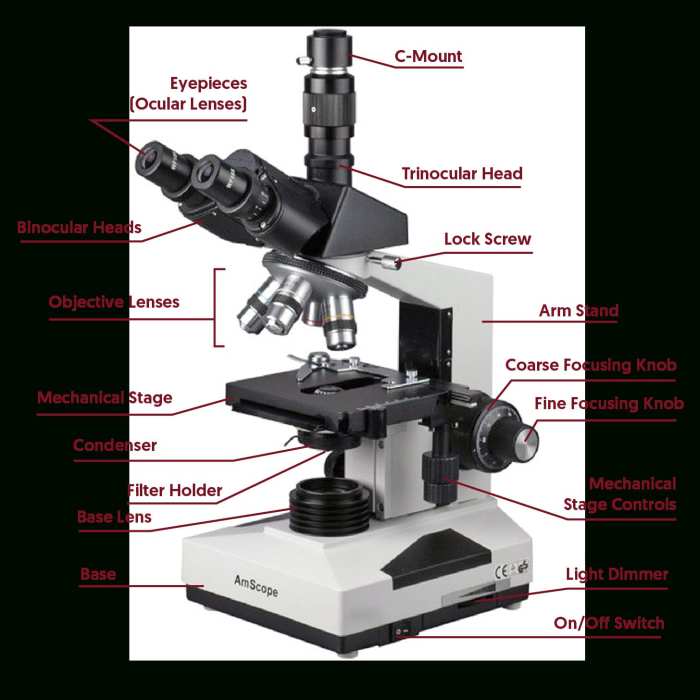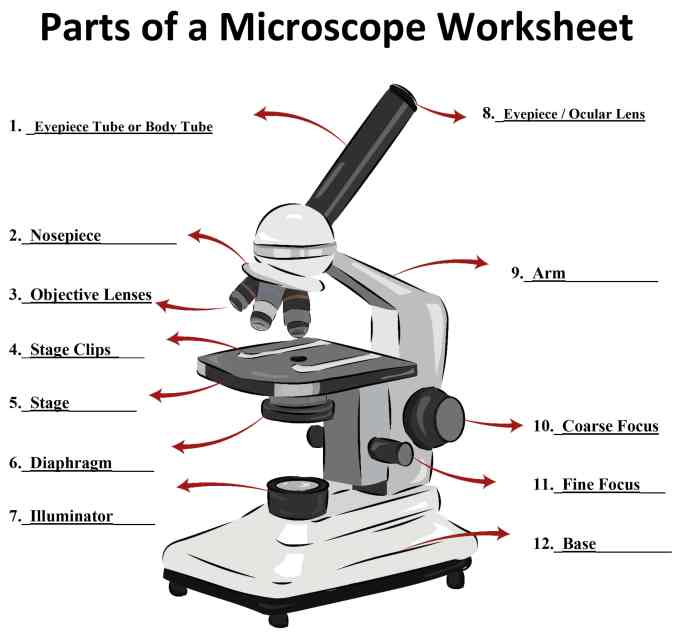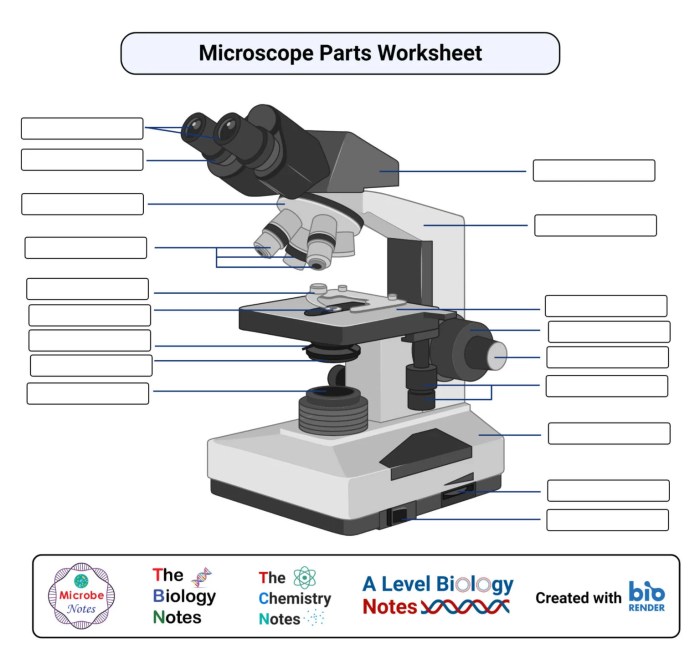Delving into the intricacies of microscopy, Laboratory 3 Worksheet Microscope Answer Key unveils the fundamentals of this essential scientific tool. From the principles of magnification to the intricacies of specimen preparation, this comprehensive guide empowers users to harness the power of the microscope for groundbreaking discoveries.
Through detailed explanations, step-by-step instructions, and expert insights, this guide equips readers with the knowledge and skills necessary to master the art of microscopy. Embark on a journey of scientific exploration as we unravel the secrets of the microscopic world.
Microscope Overview

A microscope is a device that allows us to view objects that are too small to be seen with the naked eye. Microscopes are used in a wide variety of fields, including biology, chemistry, physics, and medicine.
The basic components of a microscope are the eyepiece, the objective lenses, the stage, and the light source. The eyepiece is the lens that you look through, and the objective lenses are the lenses that magnify the image. The stage is the platform on which the specimen is placed, and the light source provides illumination for the specimen.
The magnification of a microscope is determined by the focal length of the objective lenses. The shorter the focal length, the greater the magnification. The resolution of a microscope is determined by the wavelength of light that is used to illuminate the specimen.
The shorter the wavelength, the greater the resolution.
Microscope Operation

To prepare a microscope slide, place a small drop of the specimen on a glass slide and cover it with a coverslip. The slide is then placed on the stage of the microscope and the objective lenses are adjusted to focus the image.
To focus the microscope, first use the coarse focus knob to bring the image into approximate focus. Then, use the fine focus knob to fine-tune the focus. The image should be sharp and clear.
The proper lighting for a microscope is essential for obtaining a clear image. The light source should be bright enough to illuminate the specimen, but not so bright that it washes out the image. The light should also be evenly distributed across the field of view.
Microscope Observation
Under a microscope, you can observe a wide variety of cells and microorganisms. These include bacteria, fungi, protozoa, and algae. Each type of cell has its own unique characteristics, and you can learn a lot about them by observing them under a microscope.
When observing a specimen under a microscope, it is important to pay attention to the following details:
- The size and shape of the cell
- The presence of a nucleus
- The presence of other organelles
- The movement of the cell
By observing these details, you can identify the type of cell and learn more about its function.
Laboratory Worksheet

The laboratory worksheet is a guide that will help you to record your observations and measurements.
The worksheet is divided into the following sections:
- Data collection
- Analysis
- Sketching or photographing microscopic specimens
In the data collection section, you will record your observations of the specimen. In the analysis section, you will answer questions about the specimen. In the sketching or photographing section, you will create a visual representation of the specimen.
Microscope Answer Key: Laboratory 3 Worksheet Microscope Answer Key
The microscope answer key provides the correct answers to the questions in the laboratory worksheet.
The answer key is divided into the following sections:
- Data collection
- Analysis
- Sketching or photographing microscopic specimens
In the data collection section, you will find the correct answers to the questions about the specimen. In the analysis section, you will find the correct answers to the questions about the specimen. In the sketching or photographing section, you will find examples of sketches or photographs of the specimen.
General Inquiries
What is the primary function of a microscope?
To magnify small objects, allowing for the observation of fine details and structures.
What are the key components of a microscope?
Eyepiece, objective lenses, stage, condenser, and light source.
How does magnification impact the resolution of a microscope?
Higher magnification allows for greater resolution, enabling the visualization of finer details.